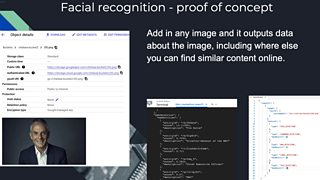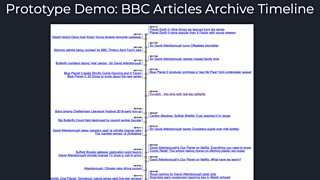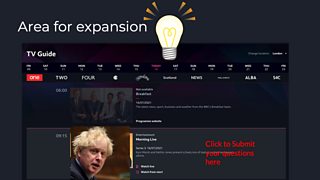The Βι¶ΉΤΌΕΔ is, famously, a creative organisation, and there has been no shortage of imaginative ways to help people feel connected to each other while many of us have been largely working from home. Online team meetings, social events including quizzes, pet shows, yoga and even cookalong sessions have all helped to bring us together, even if it's been via Zoom, Teams or Slack, and working practices for teams have adapted and continue to adapt to ensure that we can be effective.
One challenge has been to provide spaces to meet and collaborate with new people outside our usual teams when we're not in the same buildings. The recent Βι¶ΉΤΌΕΔ100 Hackathon was a great example of what can be achieved, pulling dozens of people from across the Βι¶ΉΤΌΕΔ's Technology and Product groups into small teams and getting them to work together on shared challenges.
Running across June and July, the hackathon was jointly organised by the Βι¶ΉΤΌΕΔ and Google Cloud and took place entirely online. It began with a series of online sessions to help people get familiar with Google Cloud services, as not everyone was using them. The main hack took place over two weeks, culminating in a judging day when every team got to present their ideas and get feedback.
As next year is the Βι¶ΉΤΌΕΔ's centenary, the teams were asked to consider how we could make the best use of our rich history and the material in the Βι¶ΉΤΌΕΔ's extensive archive to engage future generations, with a view to shaping the next hundred years. The world in 2022 is very different from 1922 when radio was in its infancy, so it felt like a good challenge and allowed participants to explore how modern tools like the BigQuery cloud data warehouse or the image classification capabilities of Vision AI could be used to deliver new Βι¶ΉΤΌΕΔ services.
Teams were asked to focus on one of four areas:
- Education: How can the Βι¶ΉΤΌΕΔ support schools with educating future generations through the innovative use of technology?
- Diversity & Inclusion: How can the Βι¶ΉΤΌΕΔ provide content and services that are more representative of the entire UK population?
- Next-generation: How can the Βι¶ΉΤΌΕΔ blend broadcasting & digital in a way that enables different interactions with the future generation of the Βι¶ΉΤΌΕΔ?
- Content: How can the Βι¶ΉΤΌΕΔ continue to provide unique, high impact content that's universal?
After the training sessions, each team spent at least two days working on their challenge in the two weeks of the hackathon, with full access to a range of Google Cloud services. However, the intention, as with any hack, was not to produce a fully-featured solution but to do just enough to demonstrate the feasibility of an interesting idea.
And they certainly did that. As one of the judges, along with Βι¶ΉΤΌΕΔ Chief Design Officer Ellie Runcie and Rich Radley from Google, I got to watch the presentations from the finalists, and it was impressive to see just how much the teams had embraced the challenge, thought through the problem areas, refined their thinking and then delivered a convincing walkthrough.
The winning team, made up of Matt Corbett, Chelsea Ballantyne, Michael O'Malley, Thomas Preece, Michael Maclean and Ben Fields, came from across the division and brought their complementary skills to bear on the pressing issue of encouraging younger audiences to explore more of the Βι¶ΉΤΌΕΔ's rich collection of programmes.

Their tool lets a viewer take an image from a programme, perhaps the thumbnail used in its programme page, and use the Cloud Vision API to extract as much data as possible about who is in the image, where it was taken, as well as any text. This is then used as the basis for a search across the Βι¶ΉΤΌΕΔ's collections. This is then used to drive a number of different navigation systems, for example, presenting the material on a timeline to encourage exploration of older material.

So, for example, someone could select a photograph of Stacey Dooley and be offered a range of programmes she has featured in. One possible extension the team discussed was also looking up future programmes and where it includes audience questions – for example, Question Time - letting the user submit questions directly. This connection between archive search, upcoming programmes, and audience interaction was especially imaginative.

As judges, this project impressed us in two ways. First, their idea was simple to describe – though complex to develop, as simple ideas so often are – and second, they had actually built a working end to end solution on top of the cloud services they had available so that we could see it in operation.
The team is now looking at how their idea might work with existing tagging and metadata systems, but the point of a hackathon like this is not to build a working tool but to explore ideas in a creative, stimulating and collaborative way. This certainly seems to have happened with all the teams involved here.
